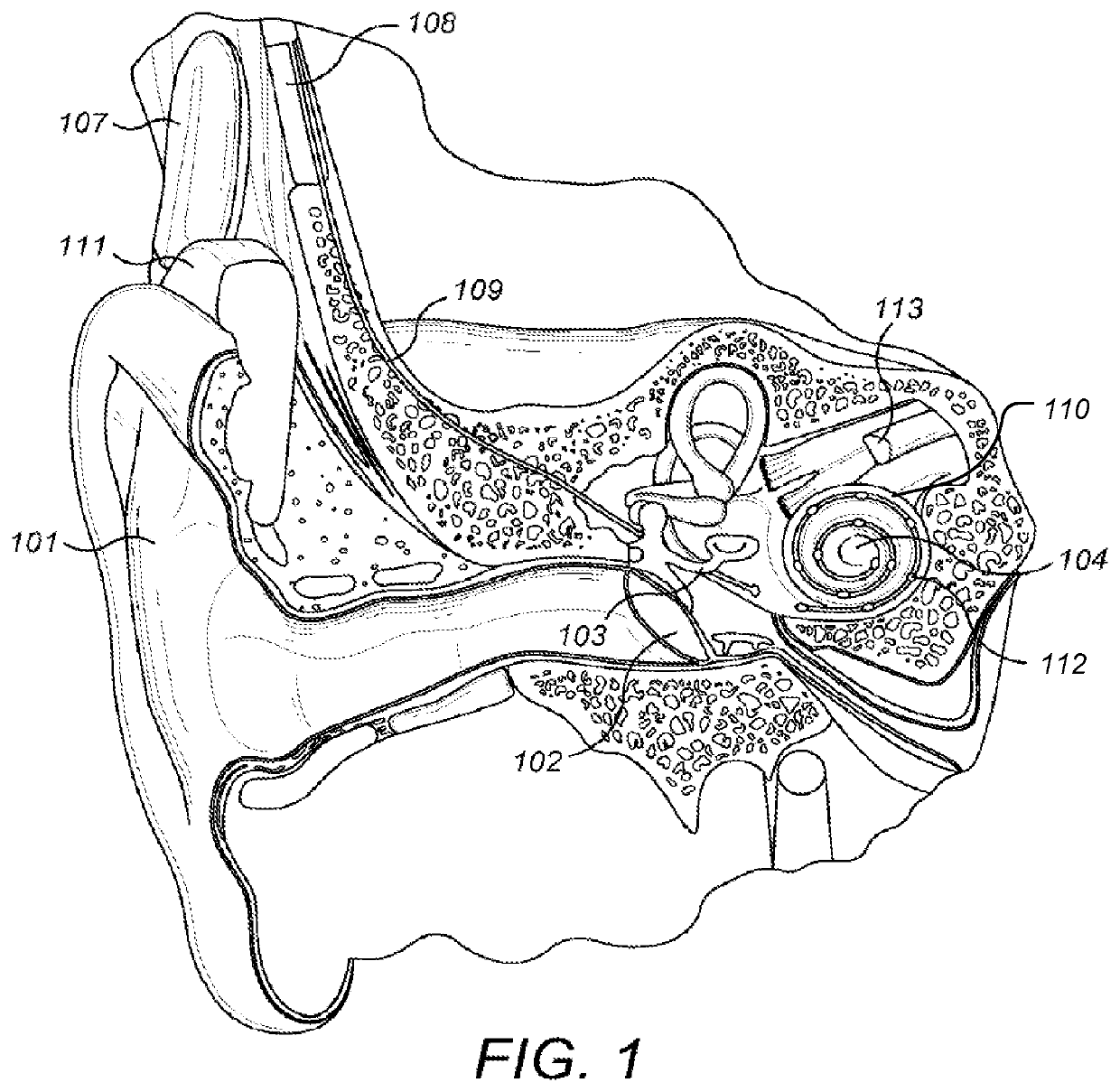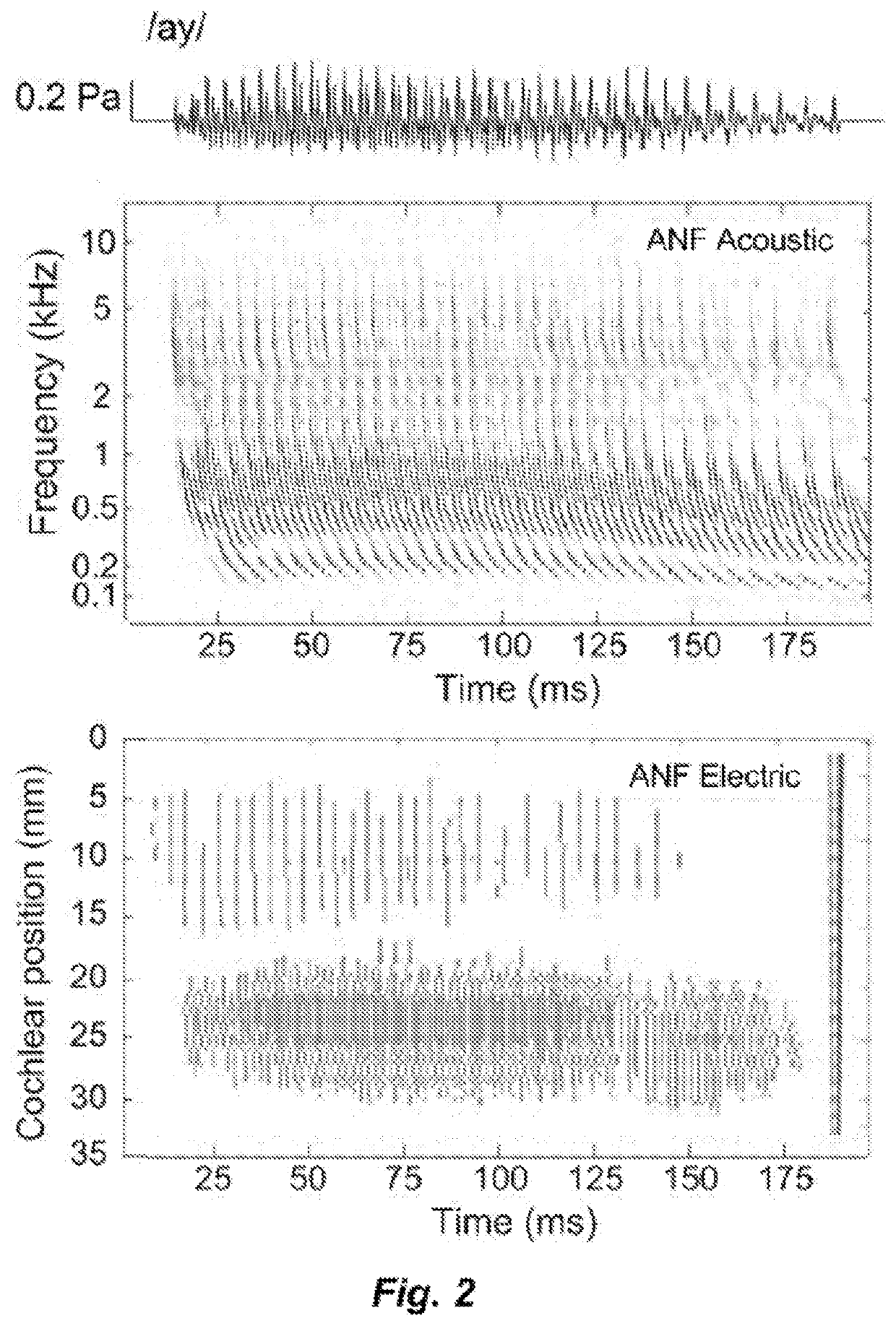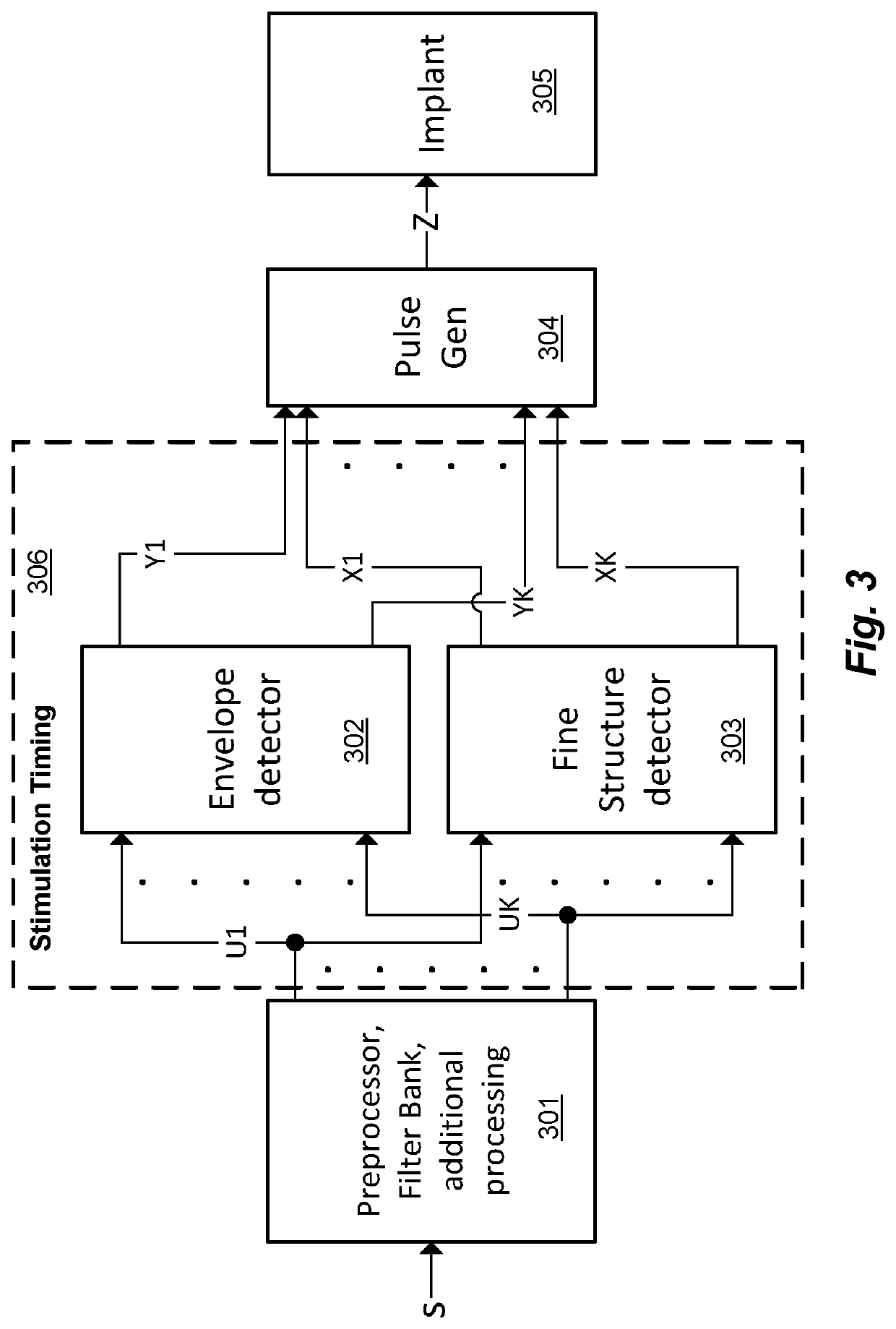Fast Objective Fitting Measurements for Cochlear Implants
a cochlear implant and objective technology, applied in the field of custom fitting of hearing implant systems, can solve the problems of inability to always provide patient feedback, inability to measure the amplitude growth function (agf) of the ecap measurement in awake patients, and time-consuming fitting process
- Summary
- Abstract
- Description
- Claims
- Application Information
AI Technical Summary
Benefits of technology
Problems solved by technology
Method used
Image
Examples
Embodiment Construction
[0045]Embodiments of the present invention are directed to cochlear implant fitting arrangements that produce a patient-specific fit map more quickly than with existing approaches without undesirably elevating the risk of overstimulation (without exceeding MCL).
[0046]FIG. 4 shows a block diagram of a cochlear implant fitting system according to an embodiment of the present invention. Control Unit 401 for Recording and Stimulation, for example, a Med-El Maestro Cochlear Implant (CI) system, generates stimulation signals and analyzes response measurements. Connected to the Control Unit 401 is an Interface Box 402, for example, a Diagnostic Interface System such as the DIB II conventionally used with the Maestro CI system that formats and distributes the input and output signals between the Control Unit 401 and the system components implanted in the Patient 406. For example, as shown in FIG. 4, there may be an Interface Lead 403 connected at one end to the Interface Box 402 and at the ...
PUM
 Login to View More
Login to View More Abstract
Description
Claims
Application Information
 Login to View More
Login to View More - R&D
- Intellectual Property
- Life Sciences
- Materials
- Tech Scout
- Unparalleled Data Quality
- Higher Quality Content
- 60% Fewer Hallucinations
Browse by: Latest US Patents, China's latest patents, Technical Efficacy Thesaurus, Application Domain, Technology Topic, Popular Technical Reports.
© 2025 PatSnap. All rights reserved.Legal|Privacy policy|Modern Slavery Act Transparency Statement|Sitemap|About US| Contact US: help@patsnap.com



